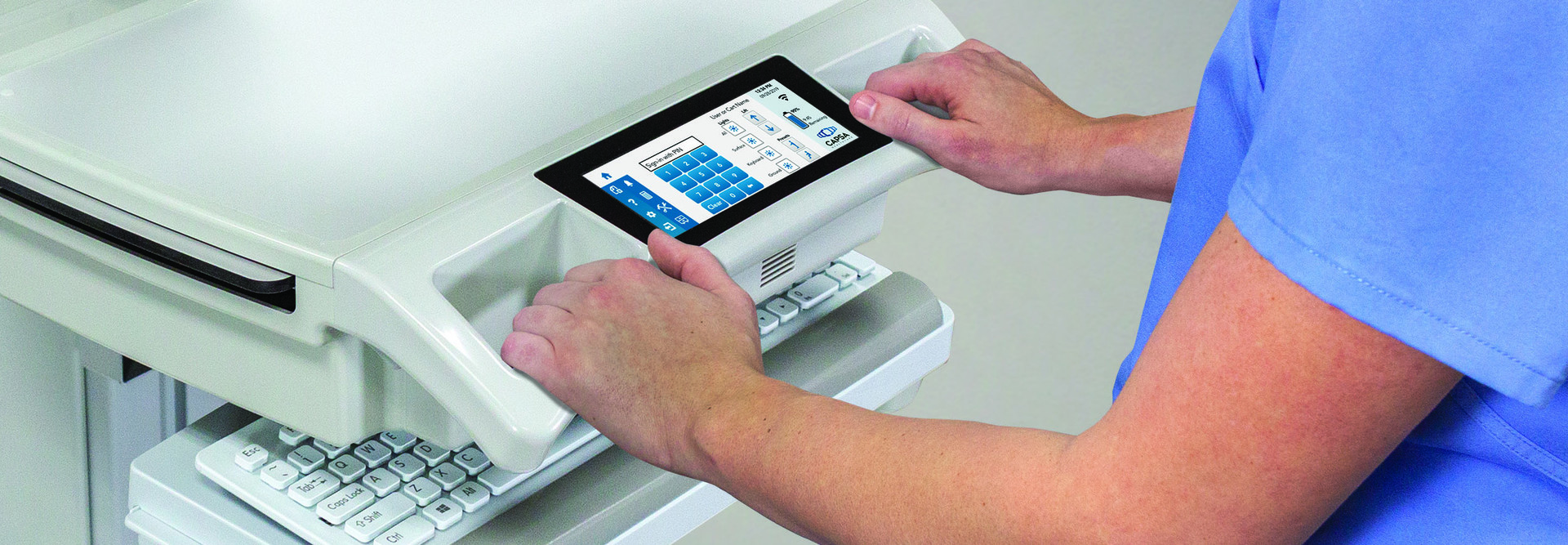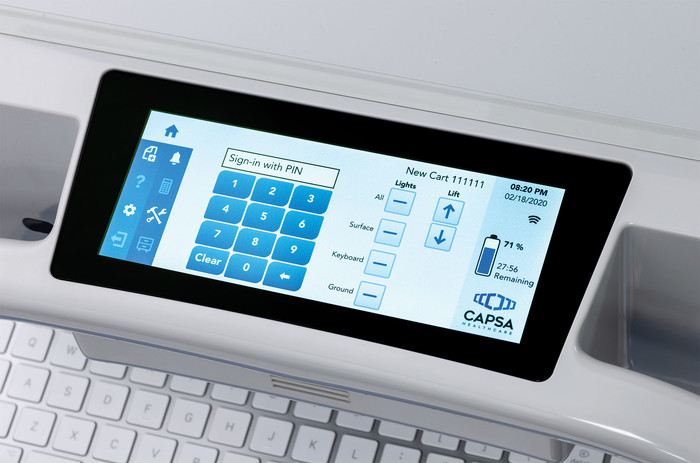The Trio workstations’ ease of transport enhances care delivery at the bedside.
Trio also supports single sign-on, often called “tap and go” by nurses, where they can tap their badges to log in to the cart and open drawers. For added security, a “do not disturb” notification light allows other carts to receive an alert when a practitioner is administering medication or performing other tasks that could be harmful if disrupted.
N-Sight Fleet Management integrates with other software systems, including help desk for service requests, sending IT alerts and monitoring cart locations, providing further benefit for support teams.
“It saves IT unnecessary trips to check on and update carts, which is especially valuable when carts are deployed at remote and smaller locations,” Torbett says. “From a nursing perspective, it helps IT keep the carts ready and available where they are needed, which saves the nurse time instead of looking for carts that are operational.”
READ MORE: Learn how improvements to point-of-care tools boost patient safety.
Designed with Caregivers in Mind
Trio’s slim design makes storage efficient while minimizing the push-pull force for users. It combines an adjustable work surface, monitor and keyboard heights, with the ability to tilt and position the monitor and keyboard ergonomically for all user heights.
The Trio model features Capsa’s N-Stride steer assist system, which is trigger operated to reduce strain when driving carts through hallways and turning corners.
And it can be customized with storage options, including drawers and bins that lock electronically. A high-capacity flexible storage system called MaxBins offers more storage higher on the cart without needing to bend over. Both standard and upgraded storage options feature remote security management.
“Storage can be configured many ways with nonlocking, locking and even dual-locking drawers for controlled medications,” Torbett says, and additional features can be applied to support scanner and printer mounting, and to carry medical items and supplies.
“The same cart platform can be customized many different ways for different units’ needs throughout the facility and health system,” he says.
Brought to you by:














